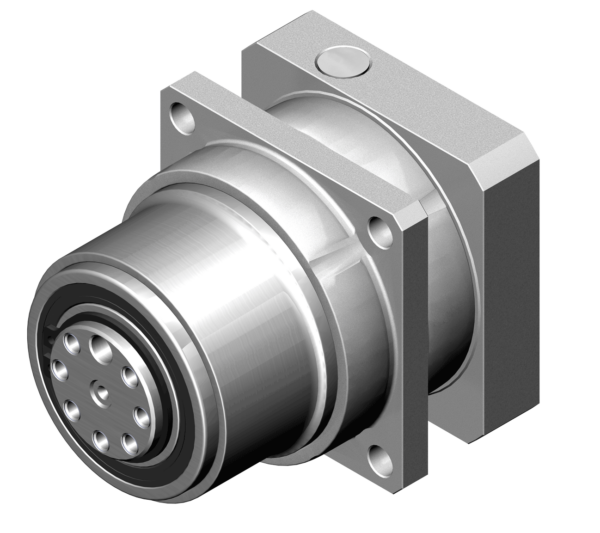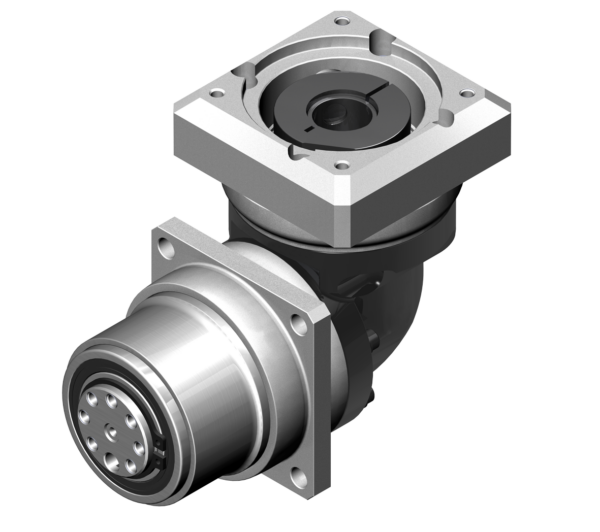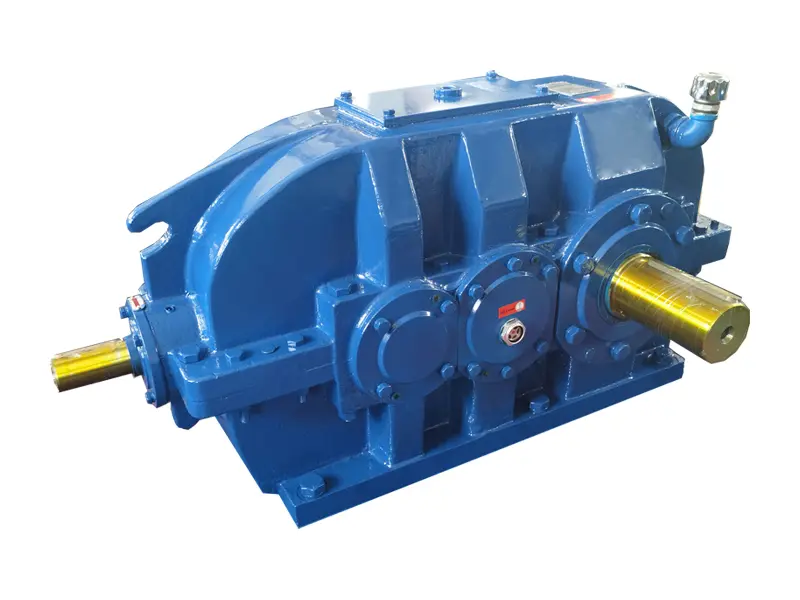Product Description
SMR SMSR Speed Reducer Torque Arm Parallel Axis Shaft Mounted Reductor Gearbox
Features:
1. High strength of gear box, gears and shafts, sturdy and durable
2. 2 metric output shaft bore diameters (Standard and Optional)
3. Optional backstop to prevent backdriving. Backstop is not recommended for the gear ratio 5
4. Double lips skeleton oil seal combines the functions of seal and dust-proof
5. Widely used in belt conveyor and pulley drive system
Product photo:
Specification for shaft mounted gearbox:
FAQ
Q: Can you make the gearbox with customization?
A: Yes, we can customize per your request, like flange, shaft, configuration, material, etc.
Q: Do you provide samples?
A: Yes. Sample is available for testing.
Q: What is your MOQ?
A: It is 10pcs for the beginning of our business.
Q: What’s your lead time?
A: Standard product need 5-30days, a bit longer for customized products.
Q: Do you provide technology support?
A: Yes. Our company have design and development team, we can provide technology support if you
need.
Q: How to ship to us?
A: It is available by air, or by sea, or by train.
Q: How to pay the money?
A: T/T and L/C is preferred, with different currency, including USD, EUR, RMB, etc.
Q: How can I know the product is suitable for me?
A: >1ST confirm drawing and specification >2nd test sample >3rd start mass production.
Q: Can I come to your company to visit?
A: Yes, you are welcome to visit us at any time.
Q: How shall we contact you?
A: You can send inquiry directly, and we will respond within 24 hours.
|
Shipping Cost:
Estimated freight per unit. |
To be negotiated |
|---|
| Application: | Belt Conveyor and Pulley Drive System |
|---|---|
| Hardness: | Hardened Tooth Surface |
| Installation: | Horizontal Type |
| Samples: |
US$ 200/Piece
1 Piece(Min.Order) | Order Sample Blue or Grey
|
|---|
| Customization: |
Available
| Customized Request |
|---|

What considerations should be taken into account when choosing lubrication for pulley gearboxes?
Choosing the appropriate lubrication for pulley gearboxes is crucial for their smooth operation, longevity, and overall performance. Several considerations should be taken into account when selecting lubrication for pulley gearboxes. Here’s a detailed explanation of these considerations:
Operating Conditions: The operating conditions of the pulley gearbox play a significant role in selecting the right lubrication. Factors such as temperature, humidity, and exposure to contaminants can impact the lubricant’s effectiveness. For example, in high-temperature environments, lubricants with high-temperature stability and oxidation resistance are required to prevent degradation and maintain proper lubricating properties. Similarly, in wet or dusty environments, lubricants with good sealing properties and resistance to water or particle contamination are necessary to protect the gearbox.
Load and Torque: The load and torque requirements of the pulley gearbox influence the selection of lubrication. Higher loads and torques typically require lubricants with higher film strength and load-carrying capacity. The lubricant should provide sufficient lubricating film thickness to prevent metal-to-metal contact and minimize wear and friction. Manufacturers often specify the recommended load and torque capacities for their gearboxes, along with corresponding lubrication requirements.
Speed: The speed at which the pulley gearbox operates is another important consideration. High-speed applications require lubricants with low viscosity to minimize internal friction and power losses. On the other hand, low-speed applications may benefit from lubricants with higher viscosity to ensure proper lubrication and film thickness under the lower rolling speeds. Proper selection of lubrication based on the gearbox’s speed helps optimize its efficiency and performance.
Lubricant Type: Different types of lubricants are available for pulley gearboxes, including oils and greases. Oils have lower viscosity and are suitable for systems with continuous lubrication, while greases have a semi-solid consistency and provide better adhesion and retention properties. The choice between oil and grease depends on factors such as operating speed, temperature, sealing capabilities, and the gearbox’s specific requirements. Some gearboxes may have specific lubricant recommendations from the manufacturer, and deviating from these recommendations may affect warranty coverage.
Compatibility: When selecting lubrication for pulley gearboxes, compatibility with gearbox materials is essential. The lubricant should be compatible with the materials used in the gearbox, including seals, gaskets, bearings, and gears. Incompatibility can lead to seal degradation, swelling, or premature wear of components. Manufacturers often provide guidelines on lubricant compatibility, and it is advisable to consult these recommendations to ensure proper compatibility and avoid potential issues.
Maintenance and Re-Lubrication: Consideration should be given to the maintenance requirements and re-lubrication intervals of the pulley gearbox. Some lubricants require more frequent reapplication or periodic maintenance, while others offer extended service life. The ease of re-lubrication and accessibility of lubrication points should also be taken into account. Manufacturers may provide guidelines on the recommended re-lubrication intervals and procedures, and it is important to follow these recommendations to maintain optimal gearbox performance and durability.
Environmental Regulations: Depending on the application and location, there may be environmental regulations or restrictions on the type of lubricants that can be used. It is important to consider any applicable regulations and ensure that the selected lubricant complies with environmental standards and regulations. Using environmentally friendly lubricants can help minimize the impact on the environment and ensure compliance with applicable regulations.
Manufacturer Recommendations: Manufacturers often provide specific recommendations for lubrication based on their gearbox designs and specifications. These recommendations may include the type of lubricant, viscosity grade, and any additional considerations. Following the manufacturer’s recommendations is crucial to ensure warranty coverage and maintain the gearbox’s performance and longevity.
By considering these factors, manufacturers and users can select the most suitable lubrication for pulley gearboxes, optimizing their operation, reducing wear, and prolonging their lifespan.

How do gear ratios in pulley gearboxes impact their performance?
The gear ratios in pulley gearboxes have a significant impact on their performance, influencing factors such as speed, torque, and power transmission efficiency. By adjusting the gear ratios, the performance characteristics of the pulley gearbox can be tailored to meet specific application requirements. Here’s a detailed explanation of how gear ratios affect the performance of pulley gearboxes:
Speed: The gear ratio determines the speed relationship between the driving and driven pulleys in a pulley gearbox. A higher gear ratio, achieved by using a smaller driven pulley or a larger driving pulley, results in a slower output speed compared to the input speed. Conversely, a lower gear ratio, achieved by using a larger driven pulley or a smaller driving pulley, leads to a higher output speed. By selecting the appropriate gear ratio, the speed of the driven pulley can be adjusted to meet the desired operational requirements.
Torque: Gear ratios also affect the torque output of the pulley gearbox. The torque is inversely proportional to the gear ratio, meaning that a higher gear ratio results in increased torque at the driven pulley, while a lower gear ratio reduces the torque. This is due to the mechanical advantage provided by the pulley system. By adjusting the gear ratio, the torque output can be optimized to match the torque requirements of the load being driven by the gearbox. Higher gear ratios are useful in applications that require greater torque, such as lifting heavy loads, while lower gear ratios are beneficial for applications that prioritize higher rotational speed.
Power Transmission Efficiency: The gear ratios play a role in determining the power transmission efficiency of pulley gearboxes. Generally, pulley gearboxes with higher gear ratios tend to have lower power transmission efficiency. This is primarily due to increased friction and energy losses associated with the mechanical advantage provided by smaller driven pulleys or larger driving pulleys. On the other hand, lower gear ratios typically result in higher power transmission efficiency. To optimize the overall performance of the pulley gearbox, it is essential to select gear ratios that strike a balance between the desired speed, torque, and power transmission efficiency.
Operational Range: The range of operation of a pulley gearbox is influenced by the available gear ratios. Different gear ratios provide different speed and torque ranges, allowing the gearbox to adapt to a variety of load conditions. By incorporating multiple pulleys, adjustable pulley systems, or variable speed drives, pulley gearboxes can offer a broader operational range. This flexibility enables the gearbox to handle a wide range of applications and accommodate varying speed and torque requirements.
System Design: Gear ratios also impact the overall design of the pulley gearbox. The selection of gear ratios influences the size, arrangement, and number of pulleys required in the system. Higher gear ratios may require smaller driven pulleys or larger driving pulleys, which can influence the physical dimensions and layout of the gearbox. It is important to consider the space constraints, load requirements, and other design considerations when determining the optimal gear ratios for a pulley gearbox.
In summary, gear ratios in pulley gearboxes have a significant impact on their performance characteristics. By adjusting the gear ratios, the speed, torque, power transmission efficiency, operational range, and overall design of the pulley gearbox can be tailored to meet specific application requirements. Careful consideration of the desired performance parameters is essential when selecting and designing pulley gearboxes to ensure optimal performance and efficient power transmission.

Are there variations in pulley gearbox designs for different load conditions?
Yes, there are variations in pulley gearbox designs to cater to different load conditions. The design of a pulley gearbox takes into account the specific load requirements, including the magnitude of the load, the nature of the load (constant or variable), and the duty cycle of the application. Here’s a detailed explanation of the variations in pulley gearbox designs for different load conditions:
- Heavy-Duty Load Conditions: For applications that involve heavy loads or high torque requirements, pulley gearboxes are designed with robust and durable components. These gearboxes are constructed using materials with high tensile strength and are engineered to withstand the stress and forces associated with heavy loads. Additionally, the pulley sizes and configurations are optimized to provide the necessary mechanical advantage and torque transfer capabilities.
- Light to Moderate Load Conditions: Pulley gearboxes designed for light to moderate load conditions may feature lighter and more compact designs. They are typically constructed using materials that offer a balance between strength and weight, optimizing the gearbox’s efficiency and performance for the specific load requirements. The pulley sizes and configurations are selected to provide the desired speed ratios and torque output while considering the load’s magnitude.
- Variable Load Conditions: In applications where the load conditions vary or are subject to fluctuations, pulley gearboxes may incorporate features to handle these variations. This can include adjustable pulley systems that allow for quick changes in speed ratios and torque output. The gearbox may also be designed to accommodate dynamic load conditions, with components engineered to absorb shocks and vibrations resulting from load variations.
- Continuous Duty Load Conditions: For applications that require continuous operation under load, pulley gearboxes are designed with considerations for heat dissipation and durability. They may incorporate cooling mechanisms such as fans or heat sinks to maintain optimal operating temperatures. The gearbox housing and components are designed to withstand prolonged operation and minimize wear and tear.
- Cyclic or Intermittent Load Conditions: Pulley gearboxes used in applications with cyclic or intermittent load conditions may be designed to handle the specific duty cycle. The gearbox may incorporate features such as enhanced lubrication systems to minimize friction and wear during start-stop cycles. The materials and construction may be optimized to withstand the repetitive loading and unloading cycles without compromising performance or reliability.
Overall, pulley gearbox designs can vary significantly depending on the load conditions they are intended to handle. The selection of materials, construction methods, pulley configurations, and additional features are all tailored to ensure optimal performance, durability, and efficiency for the specific load requirements of the application.


editor by CX 2023-09-11
